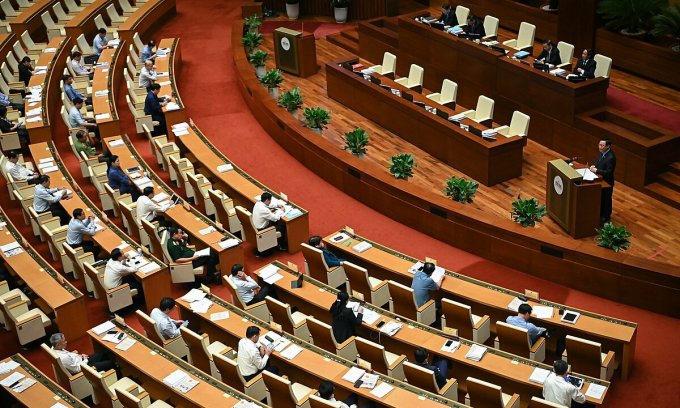Comparison of related rights and copyright under Vietnamese law

Hello lawyer, I always get confused between copyright and copyright related rights. So, can a lawyer compare copyright and copyright-related rights for me? I sincerely thank!
It can be said that copyright and copyright-related rights are two rights that are very confusing for people. Therefore, lawyer X would like to compare copyright and copyright-related rights as follows:
Legal grounds
- Law on Intellectual Property 2005, amended and supplemented in 2009
- Decree 105/2006/ND-CP
What is the difference between copyright and related rights?
Copyright means the right of an organization or individual to a work they create; or ownership (Clause 2, Article 4 of the Law on Intellectual Property 2005 as amended and supplemented in 2009).
Rights related to copyright (hereinafter referred to as related rights) are rights of organizations; individuals for performances, phonograms, video recordings and broadcasts; program-carrying satellite signals are encrypted (Clause 3, Article 4 of the Law on Intellectual Property 2005 as amended in 2009).
Pursuant to the provisions, copyright and related rights have the following similarities:
– Copyright and related rights together protect creative work; Some objects are not protected if they have content that violates the law. morality.
– A work is automatically protected at birth without registration; deposit, pay fees or perform any other administrative procedures.
But the subject of copyright and related rights can still carry out the registration procedure to ensure the interests of the subject when a dispute occurs.
With respect to property rights under copyright and related rights; This is a right of limited protection. When the term of protection expires, they will no longer be protected; and is considered to be in the public domain.
What is the difference between copyright and related rights?
| Comparative Criteria | Copyright | Related rights |
| Grounds for arising, establishing rights | Copyright arises from the time a work is created and expressed in a certain material form, regardless of content, quality, form, medium, language, published or not. father, registered or unregistered. | Related rights arise from the time when encrypted performances, phonograms, video recordings, broadcasts, program-carrying satellite signals are fixed or performed without prejudice to copyright. |
| Protected object | Literary, artistic and scientific works: Literary, scientific works, textbooks, textbooks and other works expressed in writing or other characters; Lectures, speeches and other speeches; Journalistic works, ..- Derivative works do not prejudice the copyright of the work used to make derivative works | – Performances- Sound recordings, video recordings- Broadcasts, encrypted program-carrying satellite signals |
| Protected subject | The person who directly created the work and the owner of the copyright | Performers, performance owners, producers of phonograms, video recorders, broadcasting organizations |
| Protected content | Moral rights and property rights | Mainly property rights only performers have moral rights |
| Protection conditions | Originality; shaped in a certain material form; in the fields of literature, art and science; are not subject to non-protection rights | Be original, must have the creative imprint of the subject concerned and not prejudice the copyright. |
| Term of protection | -Moral rights: protected indefinitely except for the right to publish the work; – Property rights: The term of protection is as follows: + Cinematographic, photographic, theatrical, applied art, works of art. anonymous works: The term of protection is 75 years from the time the work is first published+ Remaining works: The term of protection is the lifetime of the author and 50 years after the year of the author’s death; In the case of a work with a co-author, the term of protection ends in the 50th year after the year the last co-author dies. | – Rights of performers: 50 from the year following the year the performance is fixed- Rights of producers of phonograms and video recordings: 50 from the year following the year of publication or fifty years from the year following according to the year of phonogram, video recording is fixed if the phonogram or video recording has not been published yet- Rights of broadcasting organization: 50 counting from the year following the year the broadcast program is made |
What acts are considered copyright infringement?
According to Article 28 of the Intellectual Property Law, acts of copyright infringement include:
” 1 . Appropriating copyright to literary, artistic and scientific works.
- Impersonate the author.
- Publishing and distributing works without author’s permission.
- Publishing and distributing works with co-authors without permission of such co-authors.
- Modify, mutilate or misrepresent the work in any way; prejudicial to the honor and reputation of the author.
- Copying a work without permission of the author or copyright owner, except for the cases specified at Points a and dd, Clause 1, Article 25 of this Law.
- Making derivative works without the author’s permission; the owner of the copyright to the work used as a derivative work; except for the case specified at Point i, Clause 1, Article 25 of this Law.
- Using the work without the permission of the copyright owner; failing to pay royalties, remunerations and other material benefits as prescribed by law; except for the case specified in Clause 1, Article 25 of this Law.
- Leasing works without paying royalties, remuneration and other material benefits to the author; or copyright owner.
- Duplicating, producing copies, distributing and displaying; or communicate the work to the public via communication networks and digital means without the permission of the copyright owner.
- Publish the work without the permission of the copyright owner.
- Deliberately canceling or invalidating technical measures taken by copyright owners to protect copyright in their works.
- Deliberately deleting or changing the electronic rights management information contained in the work.
- Manufacturing, assembling, transforming, distributing, importing, exporting, selling; or lease equipment when knowing or having grounds to know that such equipment invalidates the technical measures taken by the copyright owner to protect the copyright in his or her work.
- Making and selling works where the author’s signature is forged.
- Exporting, importing or distributing copies of works without permission of the copyright owner”.
Does copying work for archiving in a library for research purposes require permission and payment?
“Article 25. Use cases of published works without permission; do not have to pay royalties or remuneration
- Use cases of published works without permission; without paying royalties, remuneration includes:
a) Self-reproducing one copy for the purpose of personal scientific research or teaching;
b) Reasonably cite the work without misleading the author for comment; or illustrated in his or her work;
c) Quoting works without falsifying the author’s intention to write articles; used in periodical publications, in radio and television programs, documentaries;
d) Quoting works for teaching in schools without falsifying the author’s intention; not for commercial purposes;
e) Copying works for archiving in libraries for research purposes;
f) Performing theatrical works and other art performances in cultural activities; propaganda and propaganda without collecting money in any form;
g) Recording, recording live performances for news reporting or for teaching;
h) Taking pictures and broadcasting visual, architectural and photographic works; applied art is displayed in a public place to introduce the image of that work;
i) Translating works into Braille or other languages for the visually impaired;
k) Importing copies of other people’s works for private use.
- Organizations and individuals that use the works specified in Clause 1 of this Article must not affect the normal exploitation of the works, or prejudice the rights of the authors and copyright holders; must provide information on the author’s name and the origin and origin of the work.
- The provisions at Points a and dd Clause 1 of this Article do not apply to architectural works, visual works and computer programs.”
Thus, in the case of copying a work for archiving in a library for research purposes, there is no need to ask for permission, or to pay royalties or remuneration.
Related article:
- Regulations on copyright for musical works in the digital environment in Vietnam
- Term of copyright protection for foreign work
- Acts of infringing copyright on musical works
Services of Lawyer X
Prestigious professional services: Firstly, the team of consultants and consultants for many years in the field of civil status, and customer support.
On-time: Certainly, with the motto “Get your lawyer right at your fingertips”, we ensure the service always performs on time. The rights and interests of customers always come first.
Cost: Besides, Lawyer X’s service costs are highly competitive; depending on the nature of the particular case. So, we want our guests to have the best possible service experience. Therefore, costs which guaranteed to be the most suitable and economical for customers.
Confidentiality of client information: Finally, all brand personal information of client Lawyer X will be 100% confidential.
Please contact us immediately with questions about the “Comparison of related rights and copyright under Vietnamese law”
Contact LSX Lawfirm
Finally, we hope this article is useful for you to answer the question: “Comparison of related rights and copyright under Vietnamese law”. If you need any further information, please contact LSX Law firm: at +84846175333 or Email: [email protected]
Frequently asked questions
Cinematographic works, photographic works, applied arts, anonymous works have a term of protection of seventy-five years from the time the work is first published; for cinematographic, photographic or applied art works that have not been published within twenty-five years from the time the work is fixed, the term of protection is one hundred years from the time the work is published. shape.
In the case of a work with co-authors, the term of protection terminates in the fiftieth year after the year of death of the last co-author.
Conclusion: So the above is Comparison of related rights and copyright under Vietnamese law. Hopefully with this article can help you in life, please always follow and read our good articles on the website: lsxlawfirm.com




